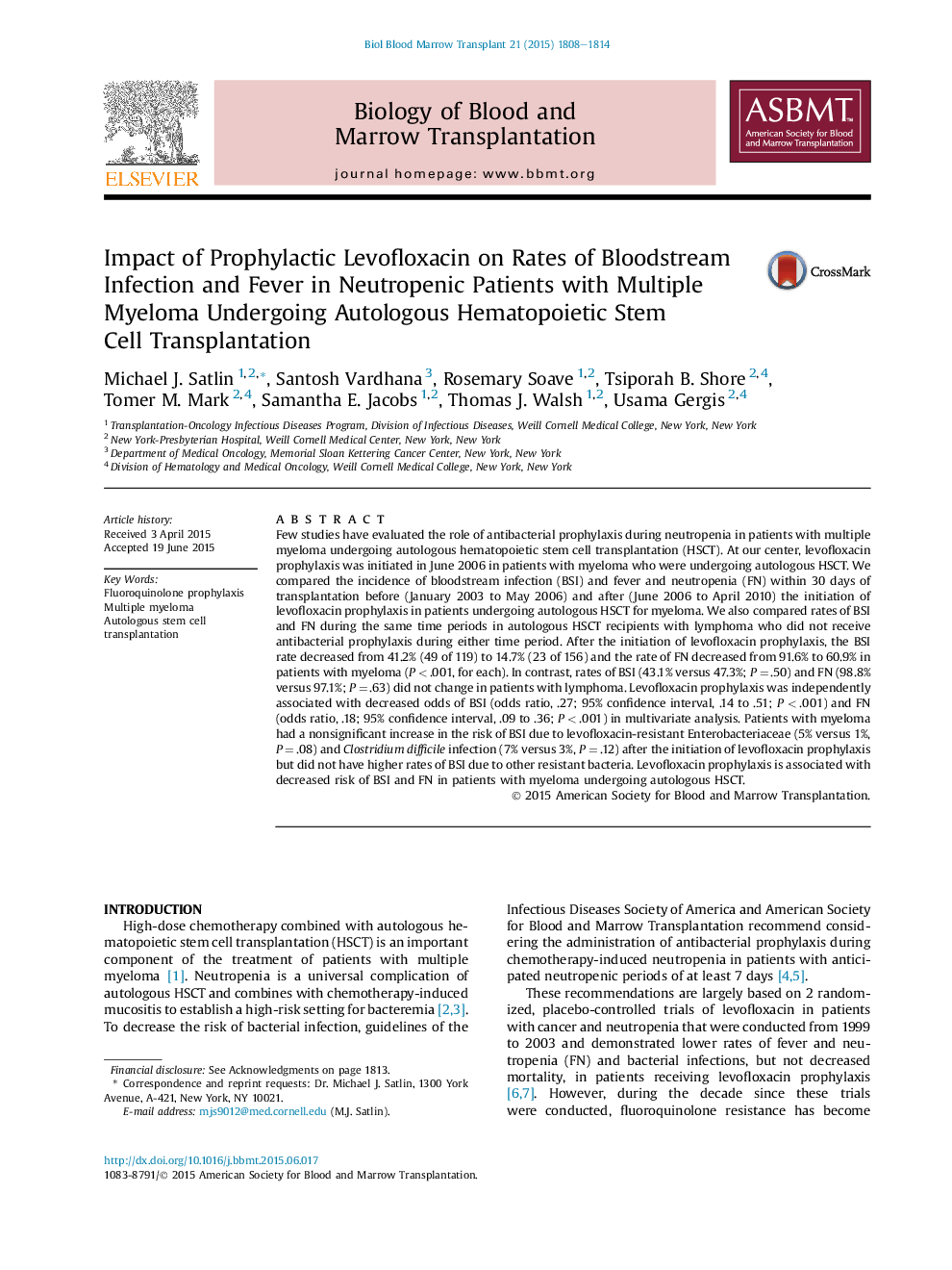| کد مقاله | کد نشریه | سال انتشار | مقاله انگلیسی | نسخه تمام متن |
|---|---|---|---|---|
| 2101322 | 1546262 | 2015 | 7 صفحه PDF | دانلود رایگان |
• We evaluated the impact of levofloxacin prophylaxis in stem cell transplant recipients with myeloma
• Levofloxacin prophylaxis led to less bacteremia and fever and neutropenia
• Rates of bacteremia due to multidrug-resistant organisms did not increase
• Nonsignificant increases in Clostridium difficile and levofloxacin resistance were seen
• Lymphoma patients who did not receive prophylaxis had no change in infection rates
Few studies have evaluated the role of antibacterial prophylaxis during neutropenia in patients with multiple myeloma undergoing autologous hematopoietic stem cell transplantation (HSCT). At our center, levofloxacin prophylaxis was initiated in June 2006 in patients with myeloma who were undergoing autologous HSCT. We compared the incidence of bloodstream infection (BSI) and fever and neutropenia (FN) within 30 days of transplantation before (January 2003 to May 2006) and after (June 2006 to April 2010) the initiation of levofloxacin prophylaxis in patients undergoing autologous HSCT for myeloma. We also compared rates of BSI and FN during the same time periods in autologous HSCT recipients with lymphoma who did not receive antibacterial prophylaxis during either time period. After the initiation of levofloxacin prophylaxis, the BSI rate decreased from 41.2% (49 of 119) to 14.7% (23 of 156) and the rate of FN decreased from 91.6% to 60.9% in patients with myeloma (P < .001, for each). In contrast, rates of BSI (43.1% versus 47.3%; P = .50) and FN (98.8% versus 97.1%; P = .63) did not change in patients with lymphoma. Levofloxacin prophylaxis was independently associated with decreased odds of BSI (odds ratio, .27; 95% confidence interval, .14 to .51; P < .001) and FN (odds ratio, .18; 95% confidence interval, .09 to .36; P < .001) in multivariate analysis. Patients with myeloma had a nonsignificant increase in the risk of BSI due to levofloxacin-resistant Enterobacteriaceae (5% versus 1%, P = .08) and Clostridium difficile infection (7% versus 3%, P = .12) after the initiation of levofloxacin prophylaxis but did not have higher rates of BSI due to other resistant bacteria. Levofloxacin prophylaxis is associated with decreased risk of BSI and FN in patients with myeloma undergoing autologous HSCT.
Journal: - Volume 21, Issue 10, October 2015, Pages 1808–1814
